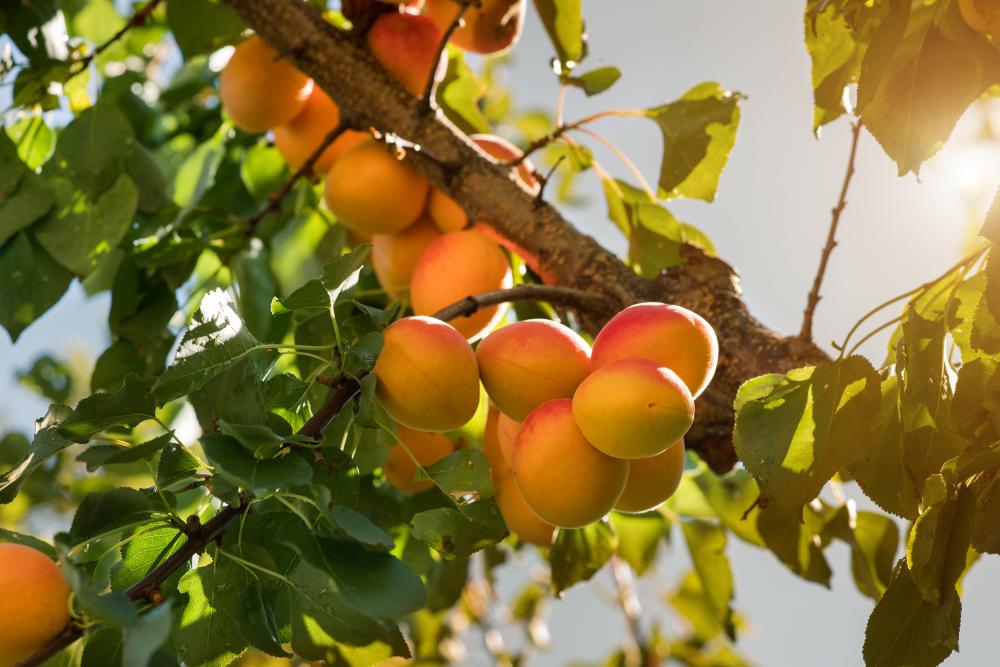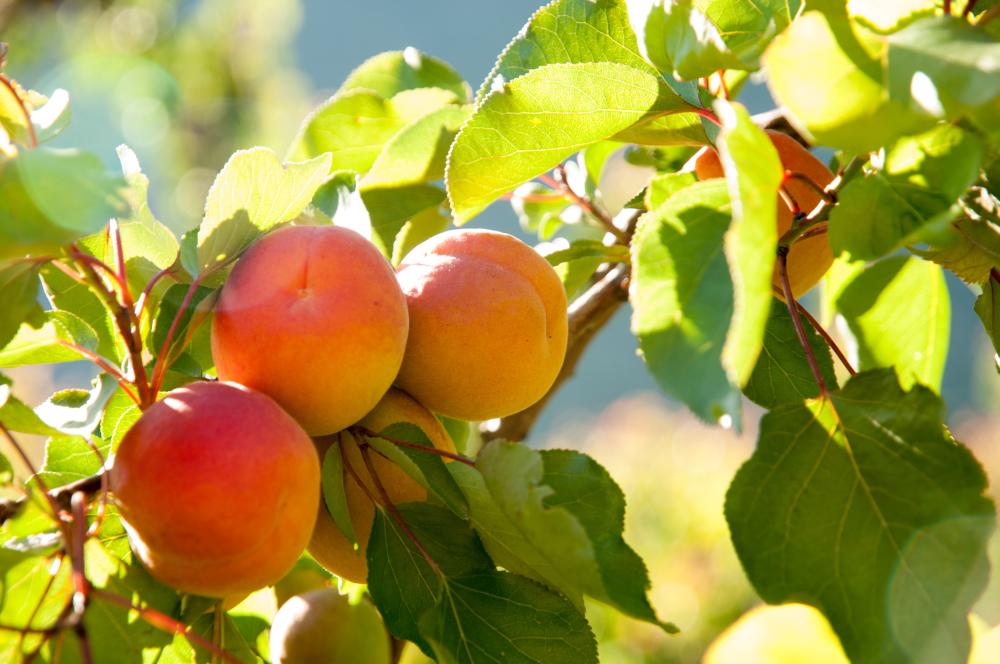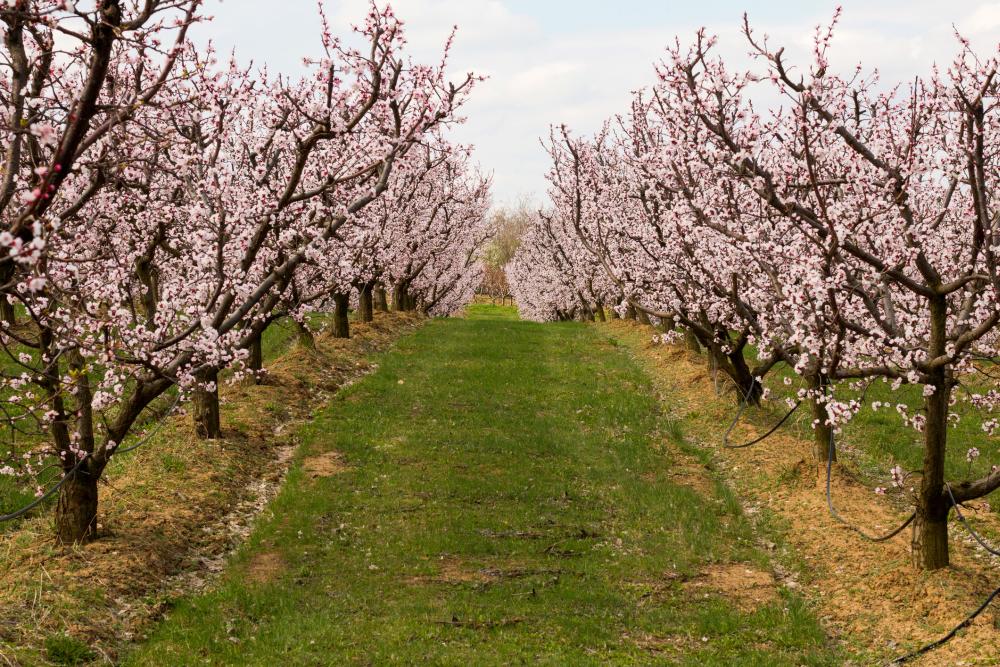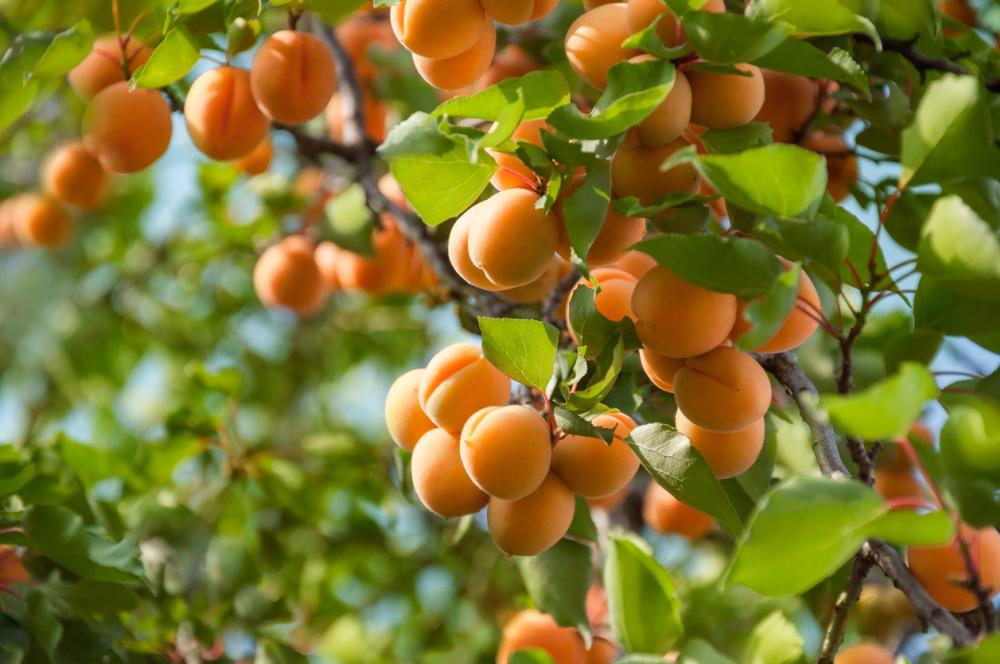Apricot Growing Problems – How to Solve the Issues of Your Apricot Tree
Apricot trees, like many other fruit trees, are a risky investment. It takes time and patience to grow one, but the results are not always up to expectations. And while some fruit trees have lush foliage and imposing stature to compensate for the meager crop, apricots don’t fall under that category. That makes the delicious fruits all the more valuable.
Add to that the many apricot growing problems you would come across as your tree matures and starts to bloom and bear fruits. Below we compiled the most common of those problems and a few recommendations to solve each one of those problems.
Apricot Not Flowering
One of the highlights of the spring for apricot tree growers is when the pinkish flowers bloom and send their pure fragrance wafting through open windows. It’s a delightful event that makes the diminutive and otherwise lackluster tree stand out. For the apricot tree, flowers are more than an ornamental value. They’re the precursors to the coveted sun-kissed fruits.
But that doesn’t always happen. Apricots are notoriously sensitive to the growing conditions around them and would stop flowering if something goes wrong. Not to mention that the tree has to be mature before it can produce flowers. And that maturity takes years. So if your apricot tree doesn’t flower, you need to inspect different factors.
How to Fix it
There’s more than one reason why the apricot tree is not flowering. It might be that the tree is too young, not properly fed, or wasn’t pruned right the previous year. Here’s a list of possible causes of apricots not flowering and how to fix them.
- Age: Unlike other fruit trees, apricots take their time to establish and mature. A young tree that’s less than 5 years will not carry flowers or bear fruits. So allow the tree time to get older.
- Fertilizer: While apricots thrive in rich soil packed with nutrients, you need to strike a balance between foliage and flower-encouraging nutrients. Organic fertilizers and homemade compost stay long in the soil and slowly feed the tree. But the apricot also needs phosphorus to trigger an abundance of blooms.
- Pruning: Pruning is also another balancing act. In general, the tree will only bloom on branches that are 2 years old. So cutting away old branches can leave the tree flowerless for a couple of years. When trimming off the tree, keep in mind that the old branches are for next year’s production. New branches will take a couple of years before they’re ready to bear flowers and fruits.
- Climate: Apricots need about 700 hours of cold weather before the fruits emerge. But that doesn’t mean that apricots are cold-hardy. So choose the right variety for your zone to avoid losing flowers to late frosts.
Apricots Not Ripening
When your apricot tree is laden with bushels of green fruits, there’s excitement and anticipation in the air, But don’t start making plans for all the jams and apricot smoothies just yet. There’s still some work to be done.
Instead of turning yellow by the day, the apricots remain green. Unripe fruits are just as good as no fruits at all. Not to mention the disappointment of losing a crop. So what went wrong?
Usually, unripe apricots are a good sign that the tree is stressed. Drought and lack of sunlight are the two main reasons your apricots will not ripen. And while it’s easy to remedy the watering situation, green apricots hiding in the shade are not easy to fix. So how do you handle this situation?
How to Fix it
The best way to avoid seeing green apricots staying unripe by the end of the season is to stay diligent about the needs of the tree.
- Water comes at the top of the list. You should maintain moist soil while the fruits are ripening. Don’t let the top 2 inches of the soil go dry, and don’t rely on rainfall to keep the tree sated with moisture.
- Examine the tree’s foliage and branches closely for signs of disease or infections. Symptoms such as yellowing leaves, canker growths, branches withering and dying, or sap leaking out of the tree could all point to disease. Take necessary steps to address the health issue to save the crop.
- Thin the fruits leaving three per cluster. You should do this when the fruits are less than an inch in diameter.
- If you have to harvest your apricots before they’re fully ripe on the tree, make sure the color has changed from the green color before picking them. Place the fruits on a paper towel and keep them in a cool and dry room. You can place an apple with them to speed up the ripening.
Apricot Pit Burn
Pit burn, soft center, and stone burn all refer to something that happens to fully ripe apricot fruits. While the flesh of the apricot is usually firm, the inside of the fruit close to the pit might turn soft. With time, the softness spreads to the rest of the fruit, and it rots pretty quickly. This is another hazard that apricots have which shows that getting the fruits to ripen isn’t the end of the road,
Some apricot varieties are more prone to this problem than others. New cultivars are less likely to develop pit burn. But in almost all cases, the reason the heart of the fruit goes soft is because of high temperature and stress.
How to Fix it
Apricot pit burn can be a frustrating problem, especially if you’re a commercial grower. What makes it such a problem is that it’s hard to detect. You’ll need to wait for the fruit to ripen before you discover that something has gone wrong. That said, there are a few things to do to prevent apricot pit burn.
- Ensure that the tree is getting enough water from the time the fruits start to develop. Moisture cools down the tree and prevents this from happening.
- Increase the potassium content in the fertilizer. Even apricot varieties prone to pit burn can benefit from potassium.
- Apricots are susceptible to high temperatures. If the middle of the summer gets hot with temperatures rising above 100 degrees F, the fruits will get a soft center.
- Avoid apricot varieties that are more likely to get pit burn. These include Helena, Tilton, Wenatchee, Royal Autumn, among others.
Splitting Apricot Fruits
While apricot pit burn is a hidden problem waiting to surprise you when you open up the ripe fruit, splitting apricot fruits is more obvious and easier to detect. While the apricot fruit cracking doesn’t impact the fruit’s taste or flavor, it cuts its storage life by half, and you’d have to consume it within a day, or it will spoil.
Still, it’s not the best way to grow apricots. And the reason the almost-ripe fruits split open is because of poor watering patterns. Other factors also contribute to the problem, such as wrong pruning, too much or too little fertilizer, and lack of sunlight.
How to Fix it
First and foremost, you should keep the apricot tree growing in evenly moist soil. Dry soil stresses the tree, which could prevent the fruits from ripening. And if you forget to water the tree when the fruits are almost ripe, then flood it with water that causes the fruits to crack open.
That’s because the stressed tree absorbs plenty of moisture to feed the fruits. The extra moisture causes them to split open. If the fruits are not fully ripe, they could stop ripening when the skin is breached.
To avoid this, use an automatic irrigation system that keeps the soil moist until the fruits change color. Stop watering and let the apricots ripen slowly.
Apricot Fruit Drop
One a good year, the apricot tree will have plenty of flowers all blooming in the early spring. Each one of those flowers, when pollinated, will turn into a small globe of deliciousness. Or so you hope. However, the tree, as usual, has overestimated its capacity to handle so many fruits.
When the fruits start developing, the tree decides to shed some of them to avoid breaking its branches under their weight.
This natural process occurs in June, and it should raise no red flags with you. In some cases, the tree will shed the immature fruits twice during that month. This actually saves you the work of thinning out the apricots yourself. With fewer apricots to manage, the fruits will grow larger and tastier. But sometimes, the apricots will drop outside of June. That’s when you have to step in.
How to Fix it
If you decide to thin the fruits out yourself and not wait for the tree to shed them willy nilly, you have better control over which fruits to keep. Start when the fruits are about one inch or less in diameter and pick out the smallish and blemished fruits. Leave 3 fruits per cluster.
When apricot fruits drop after June, there’s a chance the tree is infected with apricot scab. The disease affects the young fruits and covers them with tiny olive-green spots. The spots grow with the fruit and cover most of the skin surface. Infected apricots tend to split open and drop before they’re mature.
Always use sterilized tools when pruning, thinning out fruits, and harvesting. Once infected, there’s little you can do about saving the crop. However, you can save the next crop by spraying neem oil all over the tree after harvest time. Apply another spray next spring around the time the first buds emerge.
Apricot Not Producing
So far, we’ve been looking at problems with the apricot fruits and flowers. But what if the quaint apricot tree refuses to produce fruits? It’s a rare occurrence. Usually, a healthy tree, once it has established and started growing flowers, will continue to do so until ripe old age. So if one year, the tree carries plenty of blooms, but no fruits emerge by June, then something is wrong either with the tree or the conditions around it.
One of the main reasons the flowers will not produce fruits is because they haven’t been pollinated on time. Another reason might be pests that prey on the small fruits leaving the tree standing bare for the rest of the season.
Lack of nutrients in the soil and stressing the tree with lack of water can also be contributing factors.
How to Fix it
Pollination is as important for the apricot blooms much as it is for all fruiting plants. And while, in theory, apricot trees don’t need other trees to pollinate, having a different cultivar growing nearby improves pollination and increases the yield. Also, plant floral plants to attract pollinators to the garden.
Examine the tree for signs of pest infestations. If you find larvae or other telltale signs such as tiny holes in the leaves, use neem oil to spray the foliage.
Keep the soil moist throughout, and don’t stress the tree with water deprivation. Also, ensure the tree gets full sunlight and remove anything that comes between the branches and the sun.



